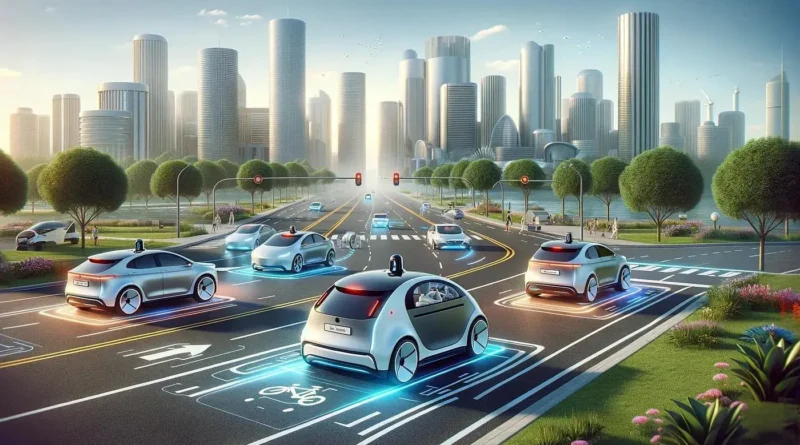The Road Ahead: Mapping the Next Generation of Automobiles
The automobile business is on the brink of revolution. The way it has been defined so far with horsepower, miles per gallon, and wear-outover-appearing look is being rewritten by ecologism, interconnectedness, automaton, and artificial intelligence. Staking the future highway by storm, what a “car” is and can be is being mapped at warp-speed sound bites.
From e-cars to electric cars, greener material, and smarter connectivity, the future car will not just provide mobility but transform. These are elements that come with this revolution buzz.
1. The Age of Electric Vehicles (EVs)
What is most likely to be observed in the evolution in the automotive industry is the electric car taking center stage. While the world is perspiring its way through the heat of global warming as ardently as it would through the burning of fossil fuels, governments and consumers alike have already looked towards EVs as the cleaner option to the system that includes ICE.
Tesla. They led the EV revolution, and now everyone’s joined in—Ford, BMW, Hyundai, Toyota, etc. Technology is taking range further and further, charging quicker and quicker, more affordable and more affordable, and so on, and so EVs have never been more affordable.
These countries around the globe are also offering incentives for buying and installing electric vehicles. Sales of new gasoline and diesel automobiles cannot be assisted in most of these countries as early as 2035.
2. Autonomous Driving: From Sci-Fi to Reality
Autonomous vehicles are here. Autonomous vehicles powered by artificial intelligence and machine learning already roll down public roads in every country that tests them. Autonomous vehicles read ahead of what’s in front of them and how to get it there with cameras, radar, lidar, and sensors.
Google spin-off Waymo, Tesla, and General Motors are some market leaders. Level 5 autonomous vehicles take decades to see the light of day before they’re even available in the mass market due to regulation and safety factors, but that kind of partially autonomous technology such as Tesla Autopilot or BMW Traffic Jam Assist are already on public roads today.
The likely effect is less than revolutionary: fewer crashes (as more than 90% are due to human error), more disabled access, and road planning.
3. Interconnectedness and Internet of Vehicles (IoV)
Not only will vehicles have passengers in the future, but they will even talk to each other. Car-to-car (V2V) and car-to-infrastructure (V2I) technology is on the horizon. When the cars talk to each other, they will exchange traffic, road conditions, weather, and accidents with other vehicles and smart city infrastructure.
This. Internet of Vehicles (IoV) will not only make driving a car enjoyable, but safe too. Take the car, for example, already alerted you of an impending smash that is ahead of you prior to crossing your vision line or braked for you if it can learn slippery roads from crowd-sourced data.
And in-car experience also receives an upgrade. Infotainment systems talk directly to phones, voice assistants like Alexa, and even monitor driver health directly.
4. Green Beyond the Motor
Reducing emissions by power alone, newer vehicles are greenifying on the manufacturing and design front as well. Plants are greenifying by returning to recycled material, vegan leather substitutes, and renewable power.
Some manufacturers are even exploring biodegradable interior trim, solar panels on the car body, or dandelion rubber tires or algae tires. All green thinking and part of a global green wave.
5. The Altered Car Ownership Dynamics
As technology is evolving, even car ownership is so last century now. Ride-sharing with Uber and Lyft, city living, and car subscription plans are making automobile ownership retro—especially in the city.
If self-fleets of cars are widespread, then, one can order a self-car when one desires to have one, i.e., a pizza. That would mean fewer cars on the road, cleaner air, and less parking space—trembling city space to its foundations.
6. Challenges and Considerations
Even if it works out next-gen cars are worth it, there’s a caveat. There’s space for safety in cars paired up as well. What if a car gets compromised while cruising down the road? There are a few ethics issues that accompany autonomy as well—what would a car do in the event of becoming a unfixable wreck?
Second, infrastructure needs to be brought up to date so that technology is housed in it. Charging stations, 5G, intelligent traffic lights, and new legislation all come under the full deployment of new car tech.
Conclusion: A Smarter, Cleaner, Safer Future
The car’s future is not re-coded by technology—it’s being re-written. Cars of the future will be smarter, cleaner, safer, and wiser than anything ever made before. It’s tough, but achievable: forward through technology-led change.
If someone plunged headfirst into the future in a coarse manner, then one could be certain of one thing—a car would never be an A to B means of transport. It will be a smart companion, a green plaything, and a persistent jab at prod change into modern life.
